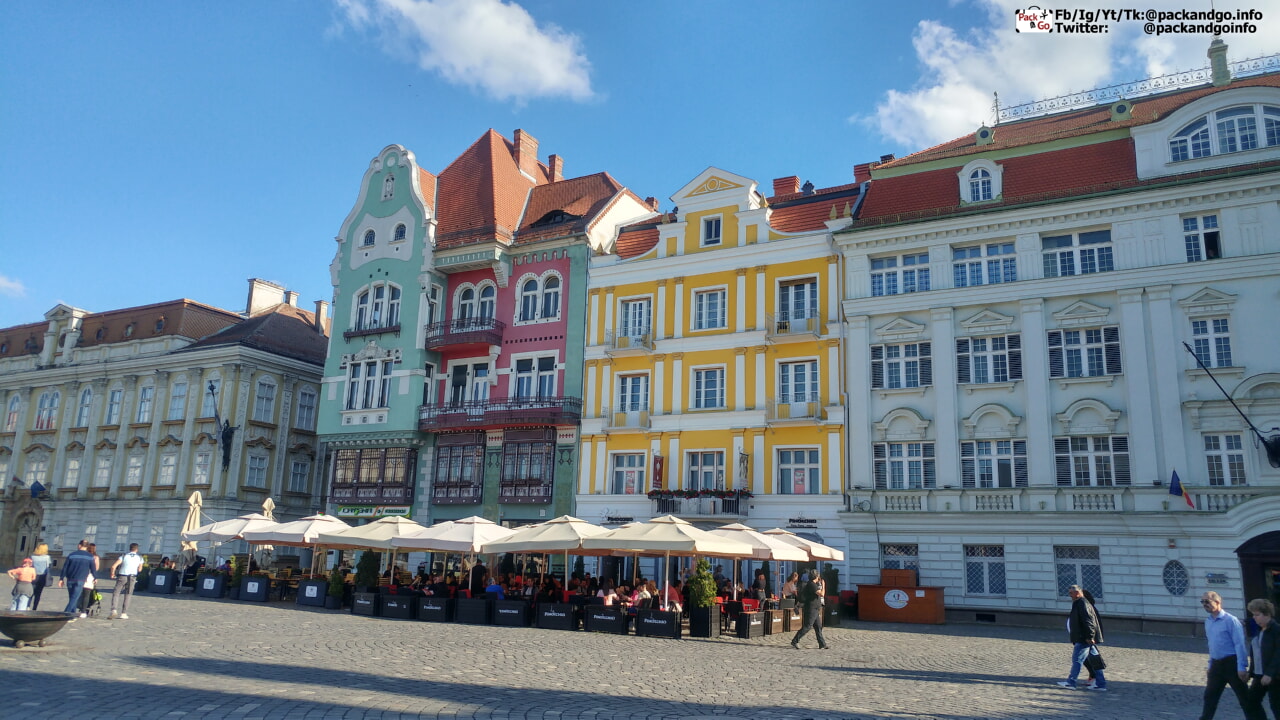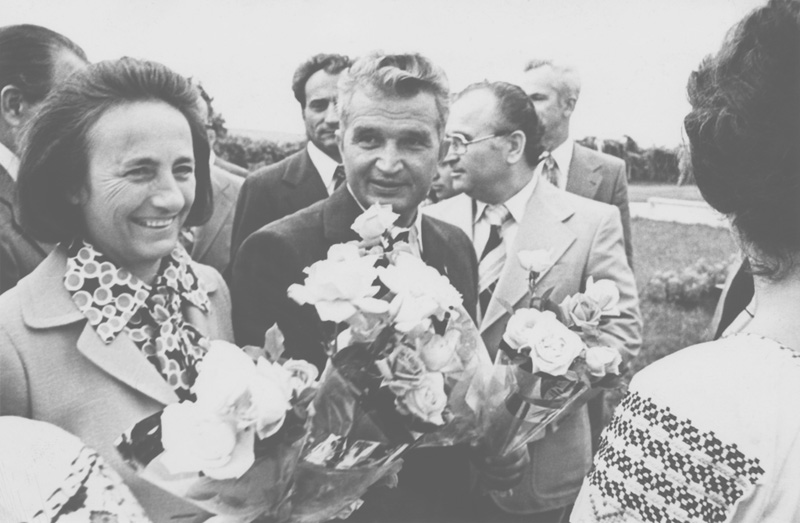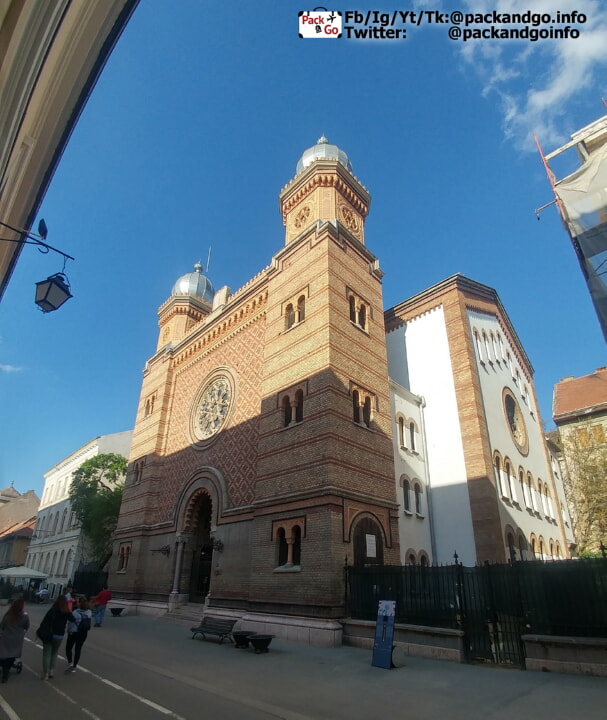All the beginning of our trip has been around nature exploring waterfalls, caves, and nature trails. But this time, we just arrived in the first big city, Timișoara. It was not easy to get back to see a lot of people on the street, trams, and vehicles going around. We got a bit intimidated because literally, we were coming out from the bushes hahaha Besides, we are not yet used to the crowds. We have been far from them the last few years due to the COVID-19 pandemic. Before, we lived years in Mexico City so we know about crowds. We had good training. But now, we feel like newbies, very afraid hahaha It took us some time to relax, and then we started enjoying Timișoara, with the mask on.

What is the origin of Timișoara’s name?
Timișoara was the name of a fortress in a Hungarian town called Temesvár, on the Timiș (in the Romanian language) river (Temes in the Hungarian language). The first register of this fortress dates back to 1177.
What is the origin of Timișoara?
Timișoara is an ancient city. Based on archeologists’ discoveries, the zone where the current Timișoara is has been populated since very old times, 200 BC. The first civilization that has been identified in the zone was the Dacian. Through time, the city got influenced by different cultures. For the Romans, it was a crossroads fortress. The Tartars destroyed it in the 13th century. The Turkish conquered it in 1552 and controlled it until 1718. Then 2 centuries of Austrian ruling over the Banat region started.
Architecture is a clear proof of these influences even today. Serb, German, Turk, and Austrian styles are visibly around.
The history of the city is really deep but we got especially interested in one chapter, the Romanian Revolution of 1989.
What happened during the Romanian Revolution in Timișoara in 1989? - A bit of history.
In 1989, a lot of protests and street violence took place (December 16-22, 1989). Communism was collapsing not only in Romania but in different countries. And it was exactly here, in Timișoara where the Romanian Revolution got ignited and from here it spread all around the country. Thanks to this, 42 years of Communism got over for Romania. Nicolae Ceausescu, the General Secretary of the Romanian Communist Party (PCR), and Elena, his wife, were executed.

Romania was living on a deep austerity (rationing of water, oil, food, electricity, medicine, and more prevailed) decided by the Ceausescu regime to pay the external debt of the country. This was the first step to transforming the country into an autocracy. A self-sufficient country ruled by one individual with absolute power.
Ceausescu’s ruling is described as totalitarian and very repressive. He suppressed and controlled the press and media. His Securitate, or secret police, was accused of repression and human rights violations.
On December 16th, 1989, in Timișoara, a Hungarian minority protested against the government's attempt of evicting a pastor called László Tőkés (Hungarian Reformed).
On December 17th, Ceausescu ordered the military repression of the uprising in Timișoara. This event was taken as a political threat. Of course, news about this was censored by the government apparatus. But the event was reported through different radio stations so people across the country knew about it. Protests increased so, in December 21st, Ceausescu gave a speech to a staged demonstration from the balcony of the Central Committee of the PCR in Bucharest. The presence of the Securitate was not enough to calm the protesters. They heckled Ceausescu while chanting “Ti-mi-șoa-ra”. He was taken inside the building by members of his security and the government TV broadcast was cut in a new attempt to hide the harsh situation. Protesters multiplied in the capital.
On December 22nd, Ceausescu and his wife fled Bucharest in a helicopter, but soon both were captured by the army which didn't support the Ceausescu couple anymore. In the following days, they were convicted on charges of genocide and economic sabotage. On December 25th, the death sentence was executed. Nicolae Ceausescu and Elena were shot.
That way, Timișoara became the spearhead of the Romanian Revolution, the progressive city that broke the communist chain. 42 years of Communism were over in around 10 days of revolts.
YouTube @packandgo.info
Facebook @packandgo.info
Twitter @packandgoinfo
Instagram@packandgo.info
TikTok @packandgo.info
Why visit Timișoara?
Well, there are different reasons to visit Timișoara: food, beer, architecture, history, and a nice vibe, are some. We stayed 3 days in this beautiful city. We walked daily visiting its treasures and we didn’t see them all. We will recommend you our favorites.
Museum of the Communist Consumer (Muzeul Consumatorului Comunist).
It’s a great place! It’s not a common museum. You won’t find a building with exhibition rooms full of vitrines and scientific descriptions of rare items. You will arrive instead at a typical Romanian apartment from Communist time. The exhibition rooms are the kitchen, kids’ room, living room, and corridors of the apartment. Objects are not perfectly organized. Instead, they are in piles, put in the closet and drawers of the furniture. Everything looked a bit messy, and that creates a perfect fiction for visitors to feel like the owners could get back at any given moment. All the stuff you find there was the type of things (furniture, carpets, toys, outfits, vinyls, radios, TVs, bicycles, flowered curtains and pillows, kitchen tools, food products, Romanian history books, the three-volume of Das Kapital of Karl Marx, propaganda, and much more) that Romanian consumers could buy during the Communism (before 1989).
It’s a fascinating jump into the past! Being a Mexican, it is like getting into a different world. Only a few of these objects were familiar to me. But for a Bulgarian like Martin and other Europeans there, this experience is like being in the home of their grandparents. They can recognize most of the objects, old brands, and styles of things. More than once, we heard “my grandpa had that old phone”, “my grandma loved those cans (conservas), “my father had that model of ice skates”, and “my mother still has an old doll like these”. That big collection of objects really means something to most of the visitors. There’s a kind of melancholy in the air. For some, those objects trigger both, sweet and bitter memories. The Revolution of 1989 was without a doubt, life-changing for Romanians. To visit this museum is a very cool and human experience! Besides, you can go upstairs to drink a cold beer or a local drink in the bar. We totally recommend it! By the way, there’s no entrance fee.
The Orthodox Metropolitan Cathedral (Catedrala Mitropolitană Ortodoxă).

The cathedral is an iconic structure of the city and a reference for you to explore around. It’s located in the middle of the main traffic arteries. Its construction started in 1936 and its inauguration occurred in 1940. Sculpture, painting, and architecture (Byzantine and Moldavian style) are values to consider in this building. We were told that 5,000 oak logs give support to the cathedral’s structure. The cathedral witnessed tragic events during the 1989 Revolution. On its steps, revolutionaries were shot.
Victory Square (Piața Victoriei).
Previously, this was a boulevard for vehicles and there, Timișoara was proclaimed the first free city of Romania on December 20, 1989.
The boulevard was called Victory Square and access is only allowed to pedestrians. Walking there you can see different statues like the one of the Wolf, Romulus, and Remus. It was donated in 1926, by Rome as a way to remember the common Latin roots.
Opera Square (Piața Operei).

This Opera Square is very close to Victory Square. They naturally connect at a point. It’s a very nice place to walk and of course, there the opera house building is.
Union Square also called Dome Square (Piața Unirii din Timișoara).

Welcome to the most antique square in the city! It was built within the walls of the prior fortress and it treasures a large number of historical monuments and beautiful buildings, which details can take you hours to admire. If you are an architecture admirer, this is a place for you. Art Nouveau and Baroque styles are everywhere!
Besides its historical treasures, and its colorful, detailed, and pretty facades, this square has a very cool vibe. You can spend hours there walking around, visiting its terraces, exploring every monument and building, or just sitting on a bench to people watching.
The current name of the square dates back to 1919, after World War I, and when the Banat region finally became part of Romania. But the history of this square is deep. It has had different names through time. As said before, there are many monuments you can see but the one in the center of the square will directly call your attention. It’s the Plague Column, also called the Holy Trinity Statue that was built to remember the victims of the bubonic plague (1738-1739).
You can also visit the Serbian Orthodox cathedral, the Roman Catholic cathedral, Brück House, the Baroque Palace (Art Museum), Prenner House, the House with Lions, Nikolaus Lenau High School, and many more buildings.
Museum of the Revolution (Muzeul Revolutiei or Memorialul Revolutiei).

As mentioned before, events in Timișoara triggered the Romanian Revolution that finally broke the communist chain. This museum keeps alive the memory of the people who participated in this movement, through photos, testimonies, personal documents, newspapers, a library, an audiovisual archive, uniforms of the Romanian army, etc.
Bega river.

Walking around Timișoara, it’s impossible not to see the Bega river. On the second day we stayed in this nice city, we decided to follow the river’s direction from Union Square. Guys, you will cross through different nice, big parks. You can make the walking as long or short as you decide. We walked something like 4 or 4 and a half kilometers. The banks of the river provide very nice areas for people to relax, walk, run, cycle, gather, and have fun. We were told that during the Summer here it used to be full of bars and music events. They were canceled for the last 2 years due to the pandemic (COVID-19). And this year, the zone is slowly re-opening such activities.
On the way back, locals recommended taking a “Vaporetto” and it was a great idea. There are electric boats in the Bega river and they are public transport, not tourist boats. The price is low (1 RON) and the experience is very nice! It includes 9 stops. You can buy the ticket directly on the boat with cash or a card.
Timișoreana brewery (Curtea Berarilor).
Guys, everybody has his/her poisons. Ours include beer haha If we are in a place that produces this beverage, it becomes a must for us to try it. So we did! The brewery is real and close to it there’s a restaurant where you can try the beer and traditional Romanian food. The brewery premises respect the architectural style of the zone. It’s not a modern building and that is very cool. The Timișoreana brewery was set in this city in 1718. This means you are drinking in every sip, more than 300 years of tradition. We totally recommend you to try it! Noroc! (Cheers!).
A note for beer lovers, there are various local beers in Romania Ursus (Cluj), Ciucas (Brasov), Zaganu (produced close to Zaganu Peak), and Ground Zero (Bucharest). To try them can be a great reason to pack and go to Romania!
The Banat Village Museum (Muzeul Satului Bănățean).

It’s an interesting ethnographic museum set on an outdoor area of 17 hectares. There you find a traditional Banat village. People have built households respecting the original style of different ethnic groups present in the Banat region throughout the time like Hungarians, Ukrainians, Swabians, Slovaks, and of course, Romanians. You will see the church, school, town hall, workshops, and houses a common village used to include. There’s an entrance fee of 10 RON per adult and a lot to walk and see there, guys.
The New Synagogue (Sinagoga Cetate).

Its construction was finished in 1864 resembling the great synagogue in Oran, Algeria. It’s a large building that can allow up to 1,500 worshipers. Its creation was the result of the growth of the Jewish community, numerically and economically, in the first half of the 19th century. After years of renovations (the latest renovation started in December 2017), it will be open again this year (2022). We were there just a few days away from the opening so we could only see it from outside but still, it was worth a photo of such an old and specific place. If you go inside, get a photo for us and share your opinion of the place, guys!
This is not the synagogue in the city. You can also see the Fabric Synagogue (Sinagoga din Fabric) built in 1899 and the Orthodox Synagogue (Sinagoga Iosefin) built between 1906-1910.
Interesting facts about Timișoara.
- Timișoara was the second city in the world, and the first in Europe, that used electricity for illuminating the streets. New York was first.
- A vast part of the city center was constructed on a swamp.
- Timișoara astonished Europe in 1869 with the introduction of horse-drawn trams, as public transportation.
Conclusion.
Timișoara is a great Romanian destination! Pack and go! Be sure you take comfortable shoes because walking is the best way to enjoy around and there’s a lot to see! Of course, the city has good public transportation but believe us, walking is the best! There’s no way you forget a visit to Timișoara. It will remain in your best traveling memories due to its architecture, parks, beer, Bega river, kind people, etc. For us, besides all the previous, Timișoara is the progressive and beautiful city that broke the communist chain.
There are a few cool destination near Timișoara you must see too:
The beautiful Orșava near Danube river.
Oradea, a surprising Romanian gem.
Or see Cluj-Napoca.
